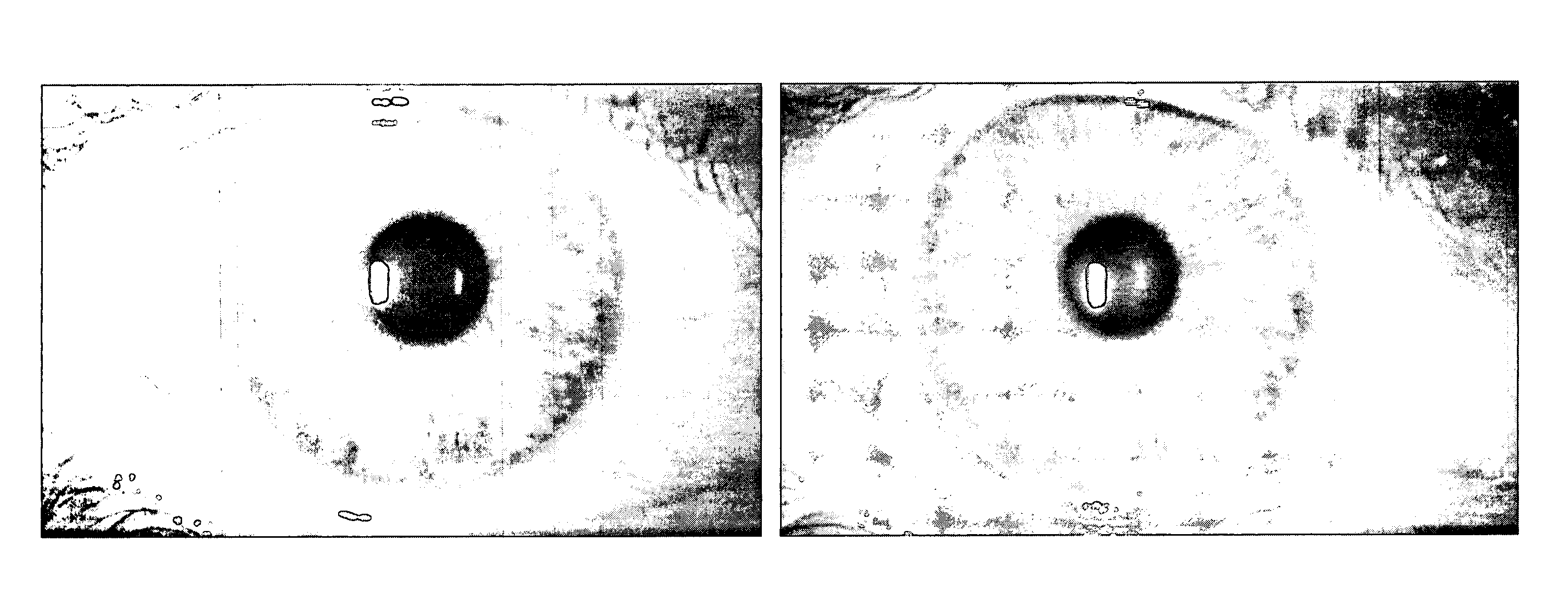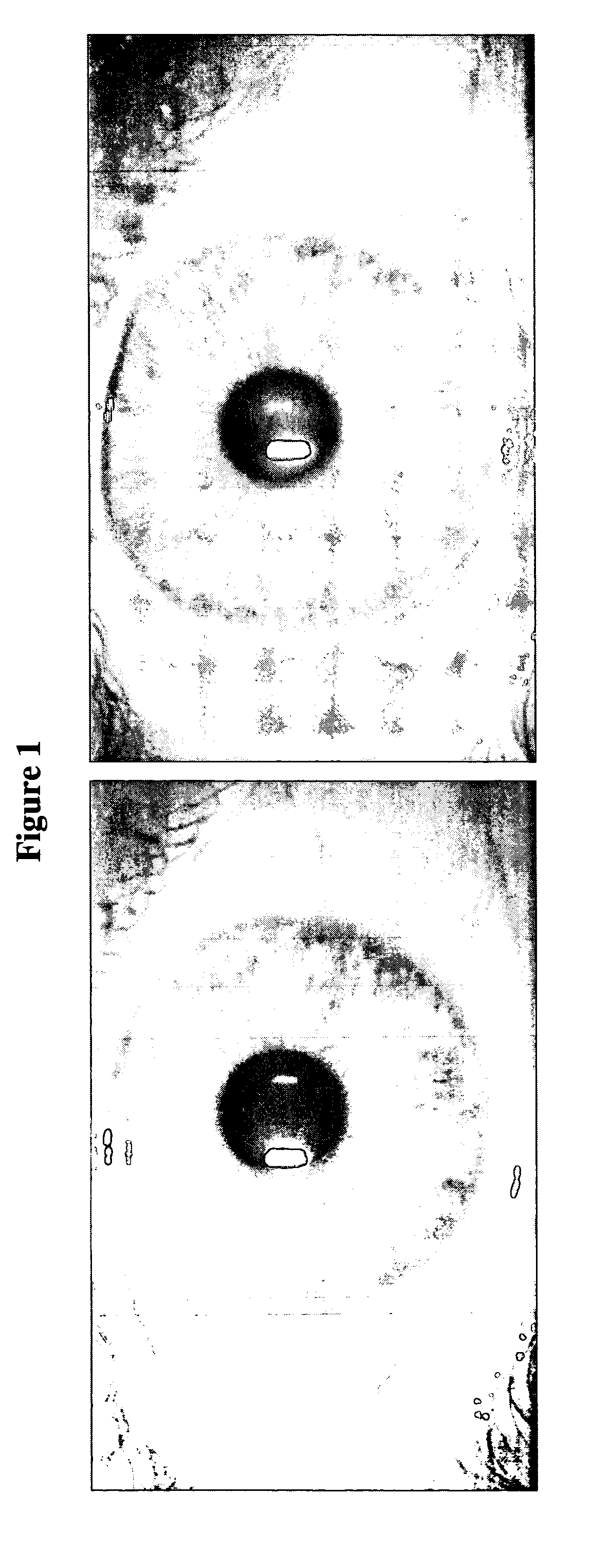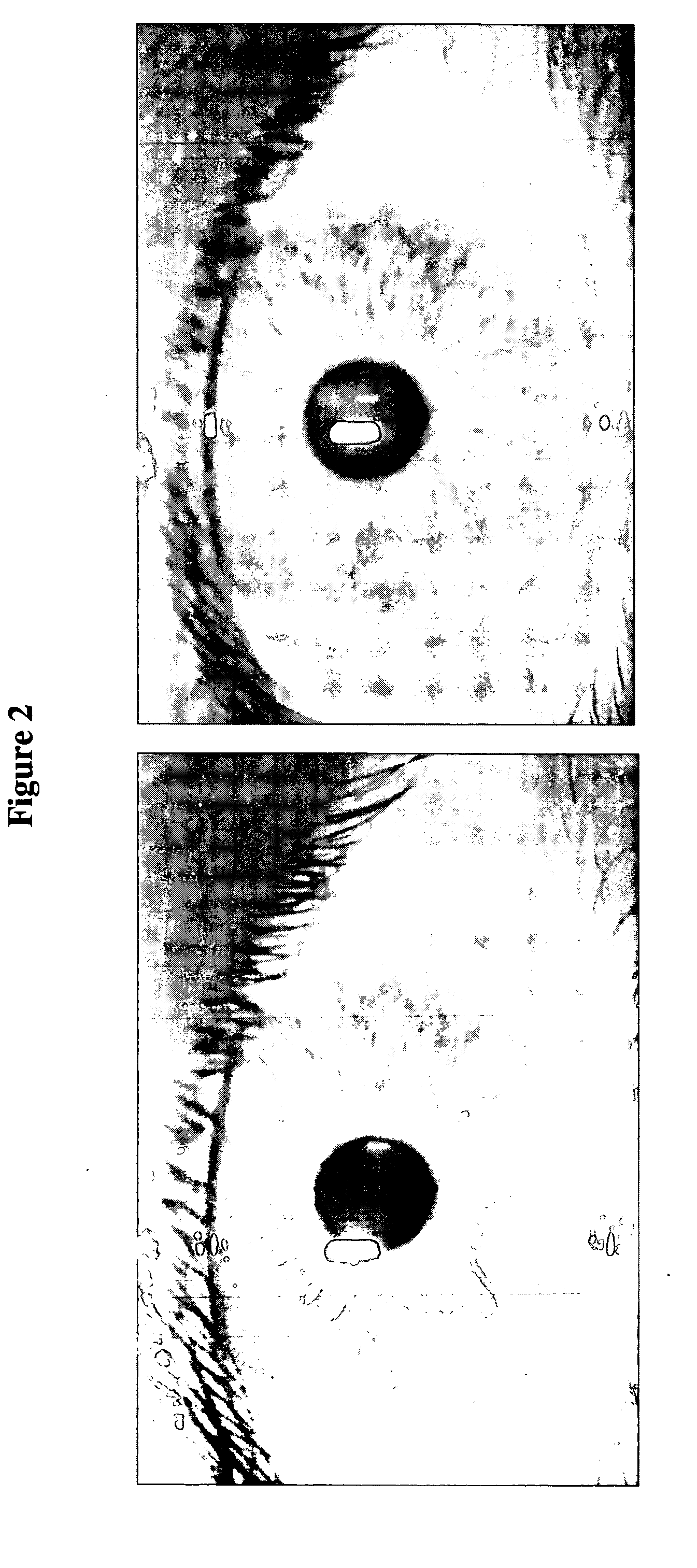Soft contact lenses displaying superior on-eye comfort
a technology of soft contact lenses and comfort, applied in the field of soft contact lenses displaying superior comfort, can solve the problems of lens wearers not being able to comfortably wear conventional lenses for a full day, contact lens wearers often reporting symptoms of dryness and discomfort, and lens wearability being able to be worn for a longer period of continuous wear
- Summary
- Abstract
- Description
- Claims
- Application Information
AI Technical Summary
Benefits of technology
Problems solved by technology
Method used
Image
Examples
example 1
[0095] The reaction components and diluent (D30) listed in Table 1 were mixed together until all components were dissolved. The 5 reactive components are reported as weight percent of all reactive components and the diluent is weight percent of final reaction mixture. The reaction mixture was placed into thermoplastic contact lens molds (front molds made from Zeonor®, back molds made from polypropylene) and irradiated at 60° C. with 0.5 mW / cm2, followed by 1 mW / cm2 then 3 mW / cm2 visible light using Philips TL 20W / 03T fluorescent bulbs. The molds were opened and lenses were extracted five times with IPA at ambient temperature for about 2 hours per cycle to remove residual diluent and monomers, placed into borate-buffered saline solution. The physical properties of the lenses (Dk, water content, advancing dynamic contact angle, modulus, elongation and dynamic coefficient of friction) were measured and are shown in Table 3, below.
TABLE 1ComponentWt %SiGMA28PVP (K90)7DMA23.5MPDMS31HE...
example 2
[0096] The lenses of Example 1 were clinically evaluated against Acuvue® brand contact lenses. The clincial evaluation, was a randomized, bilateral cross-over study with 39 patients. The lenses were worn in a daily wear mode (nightly removal) for a period of one week using ReNu MultiPlus Multi-Purpose Solution. After 30 minutes and one week of wear for each leris, the patients were asked to rate the lenses for the following: dryness, initial comfort, end of day comfort, overall preference. Each attribute is rated on a visual analog questionnaire form. The form consisted of a visual analog from 0 to 50 with verbal descriptions at specific intervals to explain the scale to the subject (50=excellent, 0=very poor). Lenses, which score above 42 on the scale, are considered good to excellent. A mean difference of five units between the lens types is considered clinically significant. Table 2 shows the preference results from the clinical study.
TABLE 2Ex. 1 v. Acuvue ® contactAttributele...
example 3
[0098] Lenses were made from the formulation in Table 4. The preparation of the macromer used is described in U.S. Patent application 200300052424.
[0099] Lenses were formed in using a process similar to that of Example 1, but with TOPAS® front molds and polypropylene back molds, curing under visible light at 70° C. Lenses were made as above except with the application of a polyHEMA coating to the surfaces of the molds as described in Examples 10-13 of U.S. Patent application 200300052424.
TABLE 4ComponentWt %Macromer18TRIS14PVP (K90)5DMA26MPDMS28HEMA5Norbloc2TEGDMA1Blue HEMA0.02CGI 18501% Diluent*20DiluentD3O
The physical properties of the lenses (Dk, water content, advancing dynamic contact angle, modulus, elongation and dynamic coefficient of friction were measured and are shown in Table 6, below.
PUM
| Property | Measurement | Unit |
|---|---|---|
| water content | aaaaa | aaaaa |
| dynamic contact angle | aaaaa | aaaaa |
| dynamic contact angle | aaaaa | aaaaa |
Abstract
Description
Claims
Application Information
 Login to View More
Login to View More - R&D
- Intellectual Property
- Life Sciences
- Materials
- Tech Scout
- Unparalleled Data Quality
- Higher Quality Content
- 60% Fewer Hallucinations
Browse by: Latest US Patents, China's latest patents, Technical Efficacy Thesaurus, Application Domain, Technology Topic, Popular Technical Reports.
© 2025 PatSnap. All rights reserved.Legal|Privacy policy|Modern Slavery Act Transparency Statement|Sitemap|About US| Contact US: help@patsnap.com



